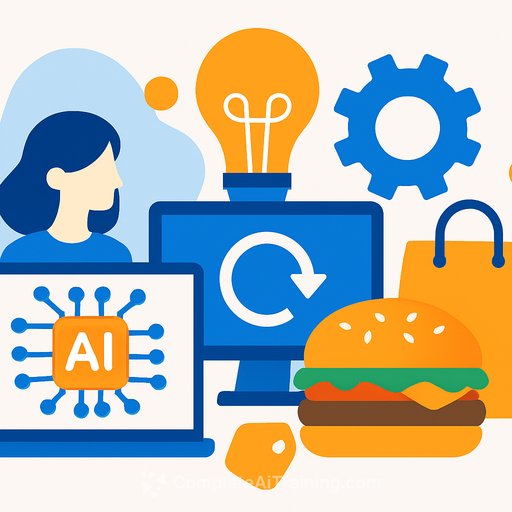OpenAI and Jony Ive's 'io' device runs into hard problems: privacy, personality, and compute
OpenAI and Jony Ive's screenless, palm-sized AI device, 'io', is hitting the usual headwinds that show up when a big vision meets hardware reality. A report from the Financial Times says the team is wrestling with core issues that could push timelines: defining the assistant's behavior, solving privacy for always-on sensors, and securing enough compute to serve users at scale.
The concept is bold: no screen, just microphones, cameras, and sensors that understand context and reply with voice. Think a desk companion you can pocket-always listening, observing, and assisting-without a phone in the loop.
The vision vs. the constraints
- Personality and tone: How it speaks, when it stays quiet, and how it avoids ChatGPT-style overtalk.
- Privacy: Always-on inputs trigger real concerns-collection, consent, retention, and user control.
- Compute: Serving a multimodal assistant to millions is expensive and capacity-limited.
One person close to the effort framed compute as the bottleneck: "Amazon has the compute for Alexa, so does Google, but OpenAI is struggling to get enough compute for ChatGPT, let alone an AI device."
Personality: talk less, help more
The device reportedly uses multiple cameras and audio inputs, building memory from daily interactions. The challenge: teaching it when to speak, when to stop, and how to be helpful without being clingy, flattering, or blunt.
- Turn-taking rules: Voice activity detection with tight thresholds, barge-in support, and caps on monologue length.
- Memory boundaries: Explicit consent gates for saving context; surface what's remembered; easy erase controls.
- Persona guardrails: No flattery, no nagging; offer options, not orders; explain "why" briefly.
- Interruptibility: A single word, tap, or gesture always pauses or stops output.
- Operational metrics: Talk/listen ratio, user interruption rate, latency to first token, correction rate.
Privacy by design for sensor-first hardware
Trust is the product. "Always listening" only works if users feel in control and can see what the device is doing.
- Hard switches: Physical mic/camera cutoffs tied to power rails, not software.
- Visible state: LED indicators wired to sensor power, not firmware, for tamper-proof signaling.
- Local first: On-device wake word and ring buffer; discard by default unless explicitly activated.
- Minimize and mask: On-device redaction and summarization before cloud; short retention windows; clear data export/delete.
- Policy surfaced in UI: Plain-language prompts during setup; recurring reminders for what's stored.
Compute is the choke point
Large-scale multimodal inference remains costly and supply-constrained. Amazon and Google have baked-in capacity; OpenAI has to balance ChatGPT demand with new device traffic. That reality forces architectural trade-offs.
- Hybrid inference: Small on-device models for intent, wake, and hot actions; escalate to cloud for complex tasks.
- Model distillation: Compress general capability into specialized, cheaper pathways for routine requests.
- Aggressive caching: Local answers for recurring tasks; short TTLs for live info; user-tunable freshness.
- Degrade gracefully: Offline modes with basic commands; queued tasks; transparent limitations when capacity is tight.
- Capacity planning: Reserve GPU/accelerator blocks early; per-DAU cost models; hard rate limits per device.
Team, supply chain, and build
OpenAI, now the most valuable private company at a reported $500B valuation, is pushing into hardware. It acquired Ive's company, io, in a $6.5B deal and brought in more than 20 former Apple engineers, plus hires from Meta's headset division and Apple's hardware team. Two people say Luxshare is involved in manufacturing, with final assembly potentially elsewhere.
Delays are unsurprising for a v1 device. Treat manufacturing as a parallel track: EVT/DVT/PVT gates, RF compliance, thermal, drop, ingress, and battery safety testing. Align firmware freezes with supply chain lead times and certification windows.
What this means for IT and product leaders
- Voice-first isn't UI-less: Provide clear controls-mute, shutdown, history view, and delete.
- Privacy ships in hardware: Physical switches and visible indicators beat policy PDFs.
- Compute risk dominates: Secure capacity early; design for graceful degradation.
- Memory is a trust contract: Opt-in by default, transparent explanations, and one-tap forget.
- Personality is a spec: Define tone rules and test them like any other behavior.
- Field test reality: Run long, messy pilots with real homes, accents, noise, and edge cases.
Questions to pressure-test before launch
- What does the device do when there's zero connectivity? What stays useful?
- How fast is the first spoken token after a wake word under poor network?
- What data never leaves the device? Who can view server-side logs, and for how long?
- What's the per-user monthly inference cost at P50 and P95 usage?
- How does the assistant apologize, recover, and get out of the way when wrong?
- How can a user see, edit, and delete their memory in under 10 seconds?
Context and next steps
According to the Financial Times, the hurdles are real but expected in a first-generation product. For teams building similar devices, start with constraints-privacy defaults, compute budgets, and conversational rules-and let ambition scale as the system earns trust.
Financial Times: Technology coverage
If you're upskilling teams on AI product development and deployment patterns, explore structured learning paths at Complete AI Training.
Your membership also unlocks:









